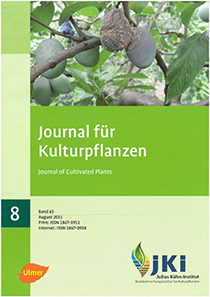Long-term dynamics of weed infestation with Veronica hederifolia after a short-term seed input
Keywords:
Population dynamics, seed persistence, threshold, Veronica hederifoliaAbstract
The consequences of tolerating a residual weed infestation with Veronica hederifolia for 2 years were quantified in an outdoor plot experiment from 1988 till 2008 (21 years). Weed infestation declined by approx 1/3 per year from 1993 till 2008 if further seed input war completely prevented. With exception of the treatment with the lowest weed infestation the soil-seed-bank was not exhausted within 21 years. It was not possible to analyse all reasons for seed decline in detail. Only the phenomenon of ”black seeds‟ was reflected in this paper. Over all, Veronica hederifolia is a low competitive weed with a pronounced seed persistence in the soil. This means from a practical point of view that in crop rotations dominated by winter cereals aspects of population-dynamics could be more important in making control decisions than only yield based thresholds.
DOI: 10.5073/JfK.2011.08.02, https://doi.org/10.5073/JfK.2011.08.02








